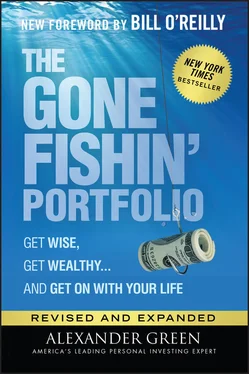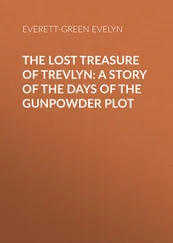When asked whether a young investor willing to take moderate risk for above-average growth should invest in (a) Treasury bills, (b) money market funds or (c) balanced stock funds, 63% of respondents chose the wrong answer—and even 49% of fund owners didn't know the correct answer was (c).
When asked whether a traditional IRA, a 401(k) or a Roth IRA offers withdrawals that are tax-exempt, only 44% knew the correct answer was a Roth.
This is really a shame, especially in a country like ours where citizens are given unprecedented freedom and opportunity to better their financial lives. Instead, too many learn the hard way, falling for the siren song of an expensive insurance agent or transaction-based broker … or committing hara-kari in a discount brokerage account.
What is the solution? Teaching basic financial literacy in every public high school in the country would be a good first step. But education reform is slow and difficult, not least of all because less than 20% of teachers polled said they felt competent to teach saving and investing.
This book intends to fill this gap. I'll cover the investment basics and unite them in a simple, straightforward investment strategy that will allow you to earn higher returns with moderate risk, ultra-low costs, and a minimal investment of time and energy.
Let me get started by telling you a little bit about my background and how I developed this investment system.
My circumstances were not as modest as Ronald Read's or my golf partner's father’s. But I wouldn't call them privileged, either.
I grew up the second of four sons, in a middle-class family in the South. I lived in a house with no air conditioning and went to public schools without it. My family had little money to travel. A vacation was the six of us piling into an old station wagon and driving to Daytona Beach to see relatives. (It wasn't until two years after I graduated from college that I took my first commercial flight.)
As a young man, I worked a series of lousy jobs: maintenance on a truck terminal, night shift in an auto-parts warehouse and so on. I had no connections. I had no inheritance. But I worked and saved and invested. And things worked out, as they did for millions of other Americans who followed a similar path. I now spend my days trying to light that path for others.
My financial fortunes did get a tremendous boost when I got into the money management industry in 1985. The work suited me. Sixteen years later, I had gone from a net worth of approximately zero to financial independence. And I retired from the industry.
I was now free to do whatever I wanted, wherever I wanted, with whomever I wanted. It's called total financial freedom. And I can tell you from experience, it's a great feeling.
Unfortunately, many of my clients had not become financially independent. This was not because I advised them poorly. As an investment advisor, I dealt with my clients honestly and gave them the best advice and service I could.
Yet, in many ways, they operated at a disadvantage. Some clients had a poor understanding of investment fundamentals. Others found it impossible to commit to a long-term investment plan. Many were simply too emotional about the markets, running to cash at the first hint of danger.
Contrarian instincts are rare, too, I learned. Few people are emotionally stirred by low stock prices. But I am one of them. Every time there was a correction, a crash or a financial panic, I'd get an adrenaline surge, my pulse would rise, and I'd start buying.
My clients often did just the opposite. They were more inclined to curse loudly, sleep little and hurl epithets, some unrepeatable. Unfortunately, strong emotions like these are often a prelude to bad investment decisions.
Then there was the other small matter of my firm's fee schedule. Investment professionals don't get into the industry because the work is meaningful but low paying. You become a broker, a financial planner, an insurance agent or a money manager to get rich. And most of us do, eventually. In truth, what you're paying your financial advisor is probably too much. Many investors aren't doing that well because their advisors are doing too well .
This story is as old as Wall Street itself. In his book Where Are the Customers’ Yachts? , originally published in 1940, Fred Schwed Jr. tells the story of a visitor to New York who is taken to the harbor and shown the impressive yachts that belong to the bankers and brokers. A tad naïve, the visitor asks, “But where are the customers’ yachts?”
Where indeed.
I'm not suggesting that this is all Wall Street's fault. Clients are rarely abducted and forced at gunpoint to sign account-opening forms. Nor can advisors make important investment decisions without their clients’ consent (not without landing in the hoosegow, anyway). We all need to take responsibility for the decisions we've made, including the decision to delegate important responsibilities.
Since retiring from life as a registered investment advisor 20 years ago, I've been busy living what I call “the second half of my life” as a financial writer.
For more than two decades I have been the Chief Investment Strategist of The Oxford Club, the world's largest financial fellowship with over 170,000 members. I am also an editor of Liberty Through Wealth , a free daily investment research service with over 600,000 subscribers.
Frankly, writing about investments rather than dealing with individual clients suits me better. I can give advice freely, and no one who heeds it has to wonder whether my real motive is to earn fees or commissions or capture their assets. I can offer opinions about the market without a compliance officer scrutinizing my words. And my readers don't have to worry about the objectivity of my analysis. I have no business relationships with the companies I cover, no investment banking colleagues seeking customers for new bond issues or secondary offerings, no reason to tell anything but the plain truth as I see it.
I don't mind telling you that many of these truths I learned the hard way. You can save yourself a lot of trouble—not to mention a boatload of money—by learning from my experience. As I've told my regular readers, “I've made the dumb mistakes so you don't have to.”
In the pages that follow, I'm going to share with you the best long-term investment strategy I know.
The Gone Fishin’ Portfolio will allow you to successfully manage your money yourself using a simple yet highly sophisticated strategy to increase your returns, reduce your investment risk, eliminate Wall Street's high fees and keep the taxman at bay, too. The idea is simple: Get Wise, Get Wealthy … and Get On with Your Life.
In Part I, Get Wise, we'll examine the challenges you face as an investor. I'll review the fundamental relationship between risk and reward in the financial markets. You'll also get an insider's view of how the investment industry really works.
Get Wealthy, discussed in Part II, means understanding and, I hope, adopting the Gone Fishin’ strategy. You'll learn why this is arguably the safest and simplest way to reach your long-term financial goals. I will also address the financial and psychological challenges you're likely to face in the years ahead.
Get On with Your Life, which we will discuss in Part III, means taking your financial destiny into your hands and, at the same time, reclaiming your most precious resource—your time.
Setting up the Gone Fishin’ Portfolio is a snap. Maintaining it takes less than 20 minutes a year.
You may not believe you're qualified to manage your money yourself. If so, I beg to differ. Investing can be made endlessly complicated, or paint-by-numbers simple. If you keep things simple, you're perfectly qualified to manage your money yourself—and in a highly sophisticated way.
Читать дальше












